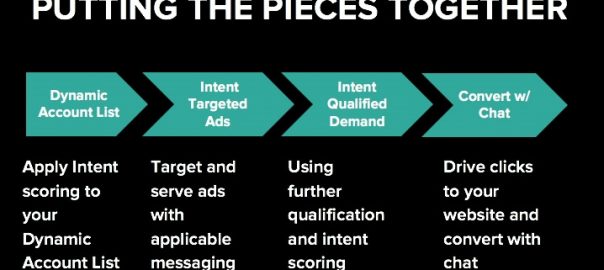— April 23, 2019
Traditional email marketing is a rinse-and-repeat process that we’re all familiar with: you get a list of target accounts, validate their contact information, send emails, review results and repeat until you get your desired results. The rinse-and-repeat email method can work to generate MQLs, but it’s costly — both financially and in terms of the amount of time and effort spent. And putting your time and efforts in the right direction makes a tangible difference.
When was the last time you reviewed email marketing process and its effectiveness in terms of driving MQLs?
Earlier this month I presented a webinar with our friends over at Drift that delved into just that. It was filled with tips and tricks that are useful for marketers everywhere who are looking to take their strategy to the next level — specifically three intent-driven alternatives to email that are just as (if not more) effective.
Managing the Customer Journey
Based on our research from 2018, only about 50% of the Best-In-Class create models of customer buying behavior processes to map the customer journey — but what does this mean?
Well, it tell us that people aren’t actually diving into their processes to figure out which ones work or if their current processes even make sense.
Utilizing quality intent data gives marketers clear visibility into the customer journey, ridding marketers of any sort of trial-and-error and offering:
- The ability to capture a broad set of behavior data
- The highest accuracy of keywords
- The ability to compare past activity with present activity and narrow down location of intent
By using the right intent data, we’ve seen 2-5x the increase in landing page conversions with campaigns. It allows marketers to see when a need arises based on buyer behavior. As seen in the chart below, the customer journey starts with a pain point — and the marketers journey historically has started in helping customers identify the pain.
With intent data, Marketers can get ahead of that identification point — based on buyer behavior, the marketer can tell before the customer really even knows they have an issue.
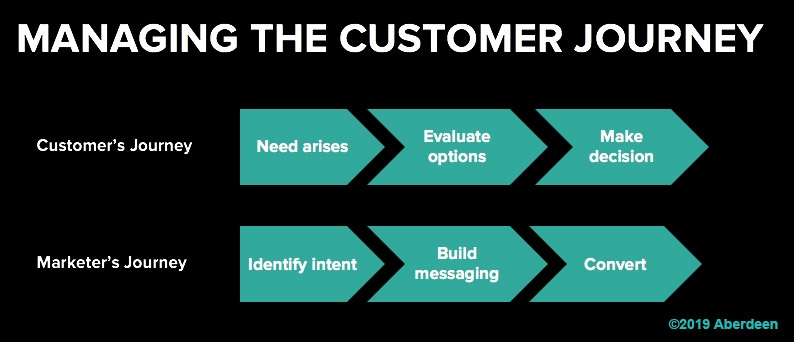
Using intent data to identify when a prospect may have a pain that they’re trying to solve as early as possible is the first trick that gives the marketer the upper hand when building their messaging and attracting that prospect.
Thinking Dynamically About Your Account List
With the rise of ABM, how often do you update and review your target account list? Maybe twice a year?
Static account lists are just that — static. They don’t take any sort of intent signals or buying signals into consideration.
With intent data, you’re able to focus on the folks who actually have a need at this point in time, while still nurturing and creating content for all stages of the funnel. Taking into account the buying intent signals, you can see who is actually in market, evaluate what websites they’re visiting, and identify look-a-like com panies on a rolling basis to expand your options for targeting.
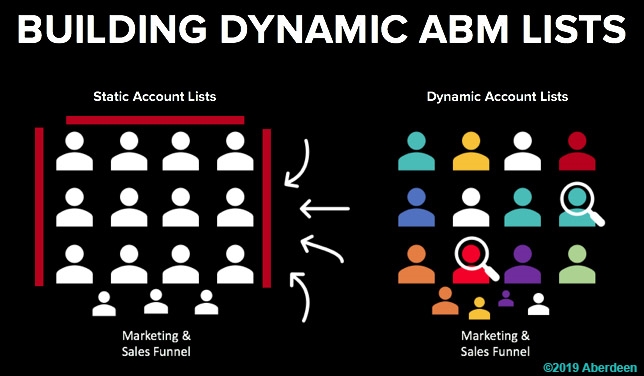
The key to thinking dynamically is around intent qualified demand. Hammering the same accounts and contacts over and over may not yield the best results. With a process like intent-qualified demand, you use the dynamic account list to target your outreach efforts to folks who are currently in-market or showing intent.
Alternatives to Display Advertising
Many of you are probably using display ads and paid search for your campaigns, but do you know how much of your budget is really reaching your target audience?
Use your money wisely and target not only based off firmographic data, but also buyer behavior, location information, intent signals. Intent data to shows you where buyers behavior signals are spiking or increasing, allowing you to create ads for the right location at the right time .
Or, if there are niche communities across the web discussing a particular topic, intent ads can be pointed to show up on those websites – saving you money and targeting the right prospects rather than spending big bucks on the main, standard sites where you’re competing with everyone for a small slice of the pie.
The table below reveals main differences between intent targeted ads and current display ads:
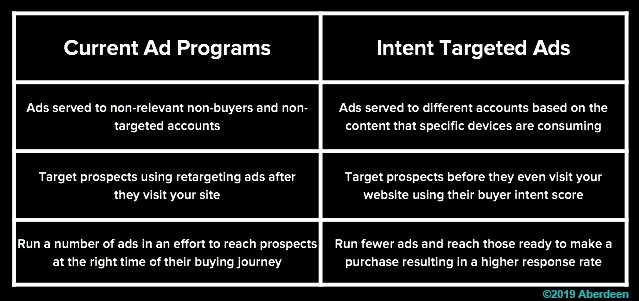
Take Your Strategy to the Next Level
The three main takeaways from the webinar boiled down to this: Using intent data to put the message where the audience takes your strategy to the next level and gives you just as many MQLs (if not more) as traditional email marketing – in a more efficient manner.
So when you review if your email marketing strategy is working to drive as many MQLs as possible in a cost and time efficient manner, remember that intent data is what keeps you one step ahead of your prospects at all times. Think about your ABM lists in terms of needs dynamically changing who’s in-market, and don’t underestimate the power of display ads.
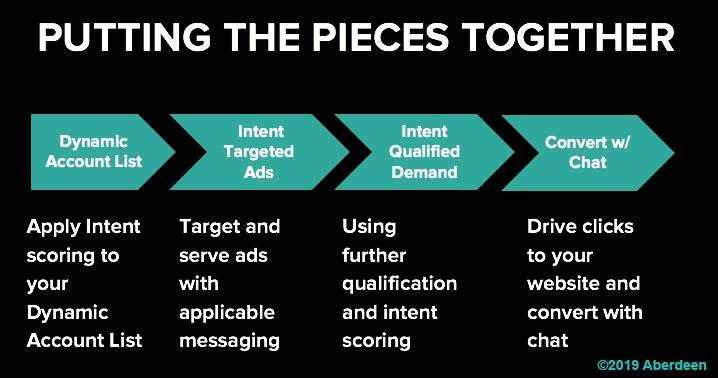
Do you know which specific companies are currently in-market to buy your product?
Wouldn’t it be easier to sell to them if you already knew who they were, what they thought of you, and what they thought of your competitors?
Good news – It is now possible to know this, with up to 91% accuracy. Check out Aberdeen’s comprehensive report Demystifying B2B Purchase Intent Data to learn more.
Business & Finance Articles on Business 2 Community
(29)
Report Post